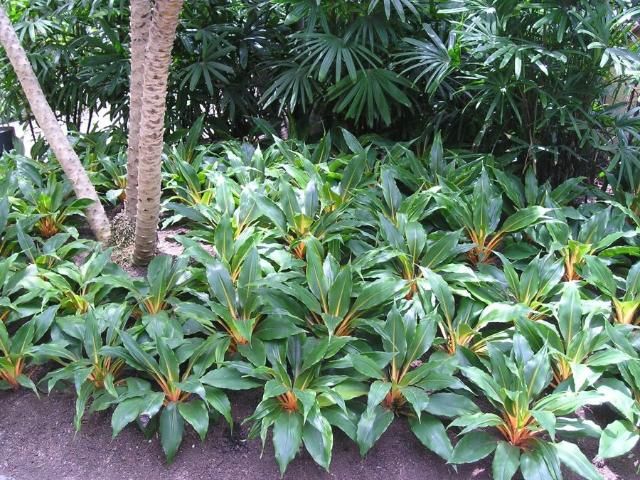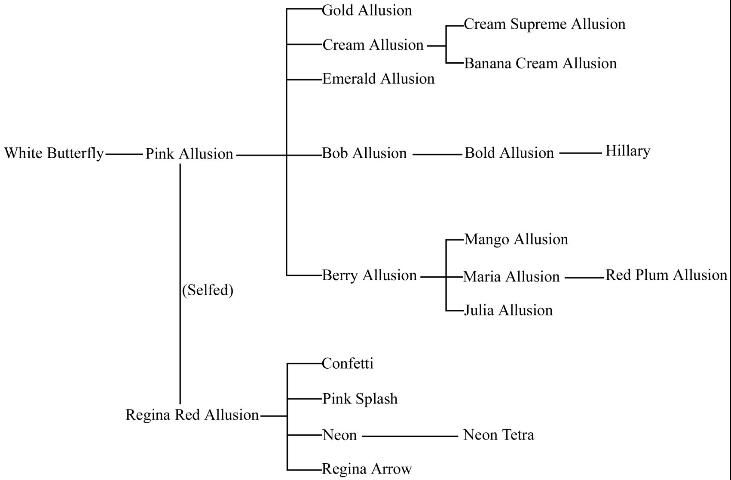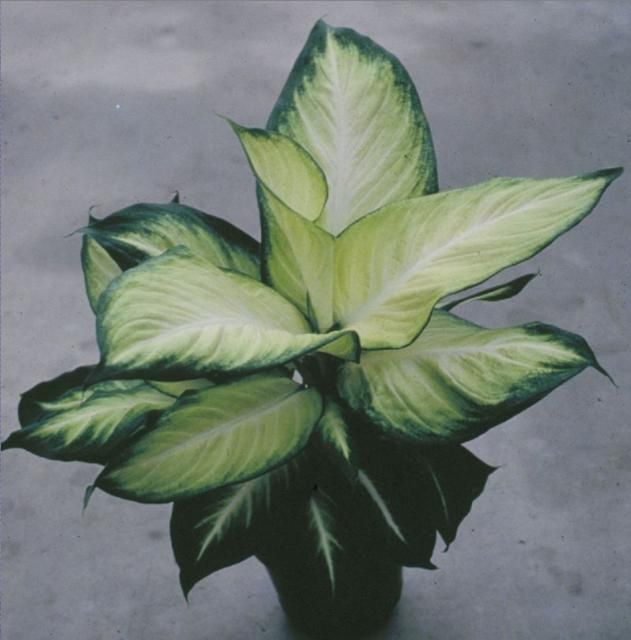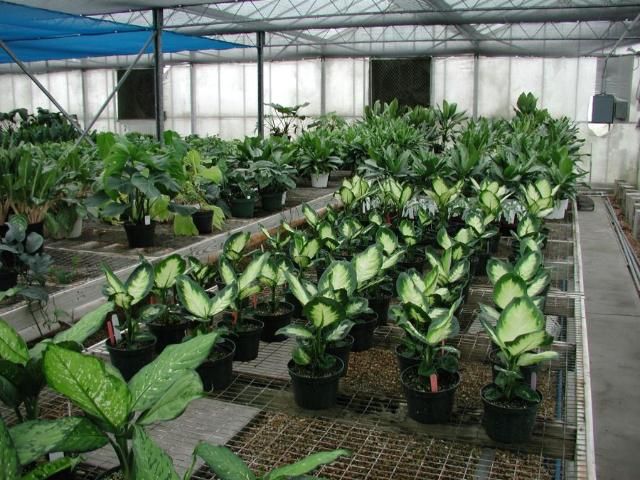There are three main avenues for new tropical foliage plants to enter the commercial trade: (1) plant acquisition and collection from the wild, (2) selection of natural or induced mutations from established commercial populations, and (3) hybridization.
Plant Acquisition and Collection
Dr. Thomas B. Croat, the world's leading expert on the plant family Araceae, spends months each year in the tropics. He has collected more than 10,000 living plants and maintains the world's largest and most comprehensive collection of living aroid plants in the Missouri Botanical Garden greenhouses in St. Louis. Croat's work resulted in the revision of identification and nomenclature in Anthurium, (Croat 1983; Croat 1986), Philodendron (Croat 1997),and Synogonium (Croat 1982). Direct collection from the wild is best done in conjunction with knowledgeable botanical garden personnel or avid private collectors. Dr. Frank B. Brown, Valkaria Tropical Garden, Valkaria, Florida made more than 50 explorations in jungles of southeast Asia and brought valuable propagation materials of Aglaonema to Florida, (Brown 2001). Calathea owes much of its popularity to collection of new varieties from Central America by Dr. Helen Kennedy. It is essential that persons who collect from native habitats are experts in identification and nomenclature. For example, an exotic plant with wide, ovate-lanceolate leaves and orange colored petioles was collected from the jungles of Thailand and identified as Palisota by the collector. Subsequent study by taxonomists determined this plant was actually Chlorophytum orchidantheroids. This unique plant was later named C. orchidantheroids 'Fire Flash' in the horticultural trade (Figure 1). The plant was evaluated by University of Florida for form, color, style, and performance under interior conditions and is now successfully produced as a new foliage plant. Collectors must also be informed on local regulations for plant export as well as laws governing import into the United States.

Not all acquisitions involve jungle exploration. For example, Ficus elastica 'Decora' was introduced to Florida from a plant collected during a visit to Holland in 1954, where it was discovered growing in a container in a hotel lobby.
Acquisition of established material from botanic gardens or private collectors is very popular. Collected materials are often exchanged among members within individual plant societies such as the American Ivy Society, the Bromeliad Society, and the International Aroid Society, all based in Florida. Plant materials are also generously shared between private collectors and public institutions such as non-profit botanical gardens and universities. The foliage plant breeding programs at University of Florida and University of Hawaii have been greatly benefited from valuable germplasm resources provided by both private collectors and botanical gardens. However, maintaining tender tropical plants is expensive in greenhouses, and it is conceivable that changes in funding or individual research interests could result in a loss of plant diversity in these invaluable collections. Until recently, neither the US National Plant Germplasm System (NPGS) nor the International Board for Plant Genetic Resources (IBPGR) had been involved in conservation of foliage plant germplasm. The Ornamental Plant Germplasm Center (OPGC), established in 1999 at Ohio State University, is considering conserving only five aroid genera (Aglaonema, Anthurium, Dieffenbachia, Philodendron, and Spathiphyllum) at this time.
Selection of Natural and/or Induced Mutations
Most foliage plant crops are propagated via cuttings or division of stock plant material. Spontaneous mutant clones, also called sports, bud sports or bud mutations, may arise during many consecutive generations of this vegetative propagation. A new plant generated from a mutated cell may develop into a viable mutant sport and these sports have been widely used in foliage plant production as a source of new cultivars. Sport initiation depends on the genetic variability of the stock plants. For example, in Florida from 1950s to 1960s, millions of cuttings of heartleaf philodendron (Philodendron oxycardium) were produced each year. However, no single mutant was selected from the cuttings because this plant is genetically stable, and rarely produces viable sports (Rose 1996). On the other hand, English ivy (Hedera helix), another cutting-propagated foliage plant, has more than 200 cultivars released; all of them were selected from sports. Another factor that affects the success of a selected sport is its relative stability in commercial production. Highly unstable sports are discarded if they fail to retain their unique color, variegation, or growth habit over time.
Tissue culture has become a reliable and efficient propagation method for many foliage crops since 1980. A form of genetic instability occurs in tissue culture that has been termed somaclonal variation. Compared to spontaneous mutations of bud sports, somaclonal variations usually occur at much higher frequencies. Screening tissue culture populations for such variants has become an important method of new cultivar development. Syngonium provides an excellent example of somaclonal variant selection as a cultivar development tool. The Syngonium pedigree in Figure 2 shows how 22 cultivars, all somaclonal variants, were selected from large populations of tissue cultured material grown in commercial greenhouses. All 22 cultivars can be traced back to the original 'White Butterfly' clone. Each variant remained stable enough to become a named cultivar. Several of the cultivars have pink or reddish coloration in the foliage that was not evident in 'White Butterfly'.

Somaclonal variants from UF/IFAS Mid-Florida Research and Education Center in Apopka include Anthurium 'Orange Hot' from A. 'Red Hot' Aglaonema 'Diamond Bay' from a mutation of A. 'Silver Bay,' and Aglaonema 'Emerald Bay,' a mutation from A. 'Golden Bay'. Selected somaclonal variants, however, if unstable, could be detrimental to a cultivar because nonuniformity in crops becomes a costly liability to the clonal propagator. This was the case for Dieffenbachia hybrids 'Starry Nights' and 'Star White' that were too unstable in tissue culture to be successful commercially.
Hybridization
Foliage plants will generally flower and can be cross-pollinated. Techniques to produce flowering on demand (Henny 1988; Henny 1995) and induce hybrid seed production (Henny 1980) were developed at the University of Florida in the early 1980s. Traditional breeding through hybridization has focused on maximizing heterozygosity. Therefore, interspecific hybridization has become the most common practice in breeding hybrid foliage cultivars (Figure 3). Interspecific hybridization offers opportunities for obtaining gene recombinations and expands the range of genetic variability beyond that of a single species. Additionally, interspecific hybridization creates unique ornamental characteristics that could not be achieved through intraspecific crosses. Parents used in foliage plant hybridization are not usually derived from inbred, single-seed descent, or pedigree selection because inbreeding depression limits development of inbred lines in most foliage plant genera. By intercrossing distinct clones, both of which have desirable characters, populations are created that may be utilized directly for selection of new clones. If the parent clones are heterozygous, each seedling is a potential new cultivar that can be fixed by vegetative propagation.

Credit: Henny et al. 1987
Evaluation of New Introductions
Whether collected from the wild, discovered within a commercial population or deliberately bred, new tropical foliage plants need to be systematically evaluated (Figure 4). This process may be conducted by an individual or by a horticultural business. Or joint effort between collectors, growers, and/or researchers may be undertaken. Evaluation of a new plant prior to commercial release must include thorough taxonomic identification. Methods of propagation and stability in propagation will be information required by examiners if patent protection is sought for a new variety. Cultivation parameters and any special techniques will be needed for grower education, training and marketing. These requirements will help define and assess the ornamental value.

References
Brown F.B. 2001. The amazing Aglaonema houseplant to the world. Valkaria Tropical Gardens, Valkaria, FL.
Croat T.B. 1982. A revision of Syngonium (Araceae). Annals of the Missouri Botanical Garden 68:565–651. Missouri Botanical Garden Press, St. Louis, MO.
Croat T. B. 1983. A revision of the genus Anthurium (Araceae) of Mexico and Central America Part I: Mexico and Middle America. Annals of the Missouri Botanical Garden 70:211–420. Missouri Botanical Garden Press, St. Louis, MO.
Croat T.B. 1986. A revision of the genus Anthurium (Araceae) of Mexico and Central America Part II: Panama, Monographs in Systematic Botany from the Missouri Botanical Garden 14:1–204. Missouri Botanical Garden Press, St. Louis, MO.
Croat T.B. 1997. A revision of Philodendron subgenus Philodendron (Araceae) of Central America. Annals of the Missouri Botanical Garden 84:311–704. Missouri Botanical Garden Press, St. Louis, MO.
Henny R.J. 1988. Ornamental aroids: culture and breeding. 10.1002/9781118060834.ch1